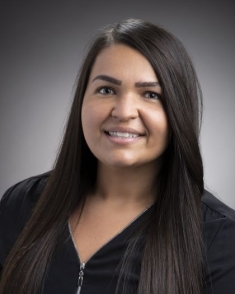Additively Manufactured Refractory Alloys for High-Temperature Environments

Gianna M. Valentino, PhD
Assistant Professor
Department of Materials Science and Engineering
University of Maryland
Abstract: Advances in additive manufacturing (AM) promise to be a game-changer in the fabrication and implementation of refractory-based components via near-net-shape processing. However, the high melting temperatures of refractories necessitate the redevelopment of AM processing parameters compared to traditional AM metals (e.g., superalloys, steels). In this study, we develop AM laser parameters for a suite of refractory alloys (e.g., W-Re, Ta-W, C103) and characterize their mechanical behavior to understand the processing-structure-property relationships. While low porosity is typically a key metric for success in most AM processing, the results presented here will discuss the need to balance maximizing bulk material density while also minimizing cracking from steep thermal gradients. In addition to room temperature mechanical properties, a study to measure the high-temperature (up to 2000°C) tensile properties at mm-cm length scales is ongoing and the results will be discussed.
Biography: Dr. Gianna Valentino is an Assistant Professor in the Department of Materials Science and Engineering at the University of Maryland (UMD), with affiliated appointments in Mechanical and Aerospace Engineering. Her expertise lies at the intersection between mechanics and materials, focusing on structural materials for extreme environments. She earned her B.S. in Physics from Saint Joseph’s University and her M.S. and Ph.D. in Mechanical Engineering from Johns Hopkins University. Dr. Valentino then joined the Johns Hopkins University Applied Physics Laboratory (JHU/APL) as a Postdoctoral Fellow and later as a Staff Scientist, where she led 12+ different research programs on novel metallic systems in additive manufacturing, including refractory and shape memory alloys. At UMD, she leads a research group focused on structural materials and metallurgy, particularly in tailoring damage pathways through interfacial control and understanding deformation mechanisms. She continues to hold a part-time position at JHU/APL.